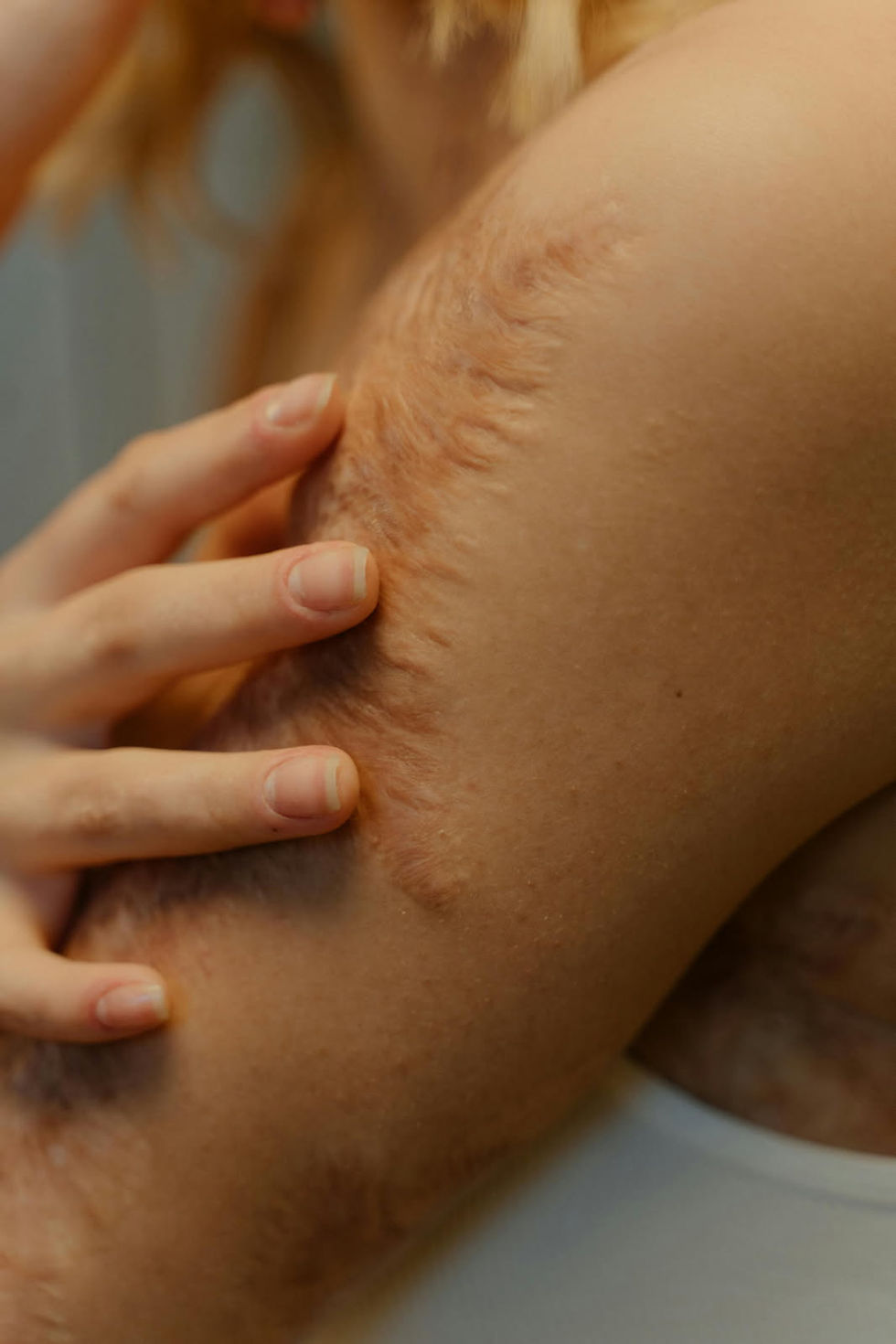Scar Tissue and the Lymphatic System- How Scar Tissue and Adhesions Impact the Lymphatic System - and What to Do About It
- Nicole Longwell

- Sep 8
- 2 min read

Suppose you’ve had surgery, an injury, prolonged tension patterns, chronic inflammation, or other types of physical trauma. In that case, you may have more than just a scar on the surface—you might have hidden adhesions and tension disrupting your lymphatic system.
🧬 What Is Scar Tissue?
Scar tissue forms as your body’s natural way of healing wounds. But unlike healthy tissue, it’s dense and fibrous, which can interfere with circulation, mobility, and lymphatic flow.
🧬Adhesions and the
Lymphatic System
Adhesions are bands of scar-like tissue that form when layers of fascia or muscle stick together after injury, surgery, or chronic inflammation. Instead of gliding smoothly, these tissues become restricted — creating tightness, pain, and limited mobility. When adhesions form near lymphatic vessels, they can block or slow fluid movement, leading to swelling, congestion, and a heavier feeling in the body. Addressing adhesions through gentle therapies like massage, microcurrent therapy, or myofascial release, along with lymphatic drainage massage, can help restore tissue mobility, improve blood circulation and lymphatic flow, and support natural healing.
💧 How Scar Tissue and Adhesions Affect the Lymphatic System
Scar tissue and the lymphatic system: SCAR TISSUE CAN ACT LIKE A ROADBLOCK against the lymphatic system. The lymphatic system relies on unrestricted movement of fluid to clear waste and toxins. But when scar tissue blocks this flow, it can result in:
Swelling or fluid buildup
Build-up of metabolic waste, inflammatory materials, and toxins
Heaviness or stiffness in the area
Slow healing or chronic inflammation
Limited range of motion and mobility
Nerve pain, neuropathy, numbness, or other altered sensations like burning and tingling
Immune sluggishness
Many people experience stuck lymph after surgery, injuries, and accidents, without realizing scar tissue may be contributing to the problem. These issues may seem unrelated, like having neck pain because of a shoulder surgery, swelling in your legs after having a C-section, or neuropathy after radiation treatments.
💆♀️ Lymph Drainage Scar Therapy: What You Can Do
Manual Lymphatic Drainage Massage (MLD)
This gentle, rhythmic therapy helps manually move lymph around blocked areas, reducing swelling and inflammation.
Microcurrent Therapy for Lymph and Scar Tissue
Low-level electrical currents stimulate tissue repair and cellular communication. When used near scars, microcurrent lymph and scar tissue therapy can reduce adhesions and improve lymph flow.
Fascial Release Techniques
Targeted bodywork helps loosen fascia and scar tissue, improving range of motion and drainage.
Dry Brushing & Movement
Simple at-home techniques like dry brushing or light stretching can help stimulate stagnant areas and support daily detox.
🌀 You Don’t Have to Stay Stuck
Whether you’re recovering from surgery, managing a chronic illness, or noticing unexplained puffiness or pain—your lymphatic system may be asking for support. Consider adding scar therapy to your healing routine.




Comments